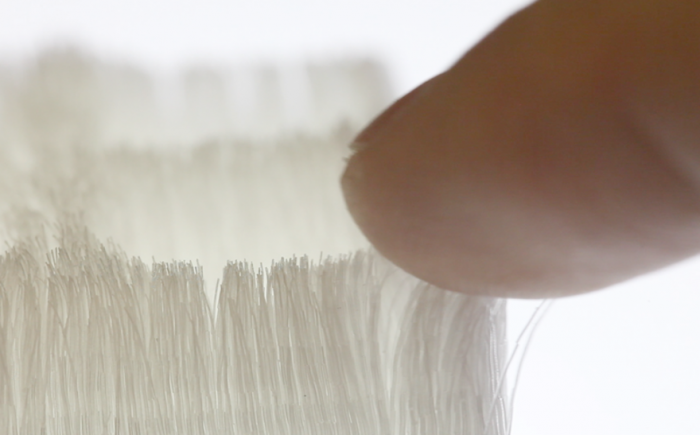
As written on their website, MIT Lab’s Tangible Media Group is dedicated to “designing human interfaces that employ physical objects, surfaces, and spaces as tangible embodiments of digital information and processes.” To put this into context, one of their latest projects, Cillia is a 3D-printed fur that could have numerous uses limited only by the imagination.
To date, the team have come up with several ideas for the fur including making objects move with vibrating hairs and creating a building block structure with the interlocking hair follicles.
By artificially fabricating the nature-inspired hair with 3D technology, the research team is able to create and manipulate furry structures with super fine surfaces that can operate on a micro scale. “It allows us to design and generate hair geometry at 50-micrometer resolution and assign various functionalities to the hair,” reads the online project page.
To create the fur, the team developed their own Bitmap system that cuts out the laborious task of 3D modelling. It also removes the hassle of having to print each hair individually. The software enables them to control the physical composition of each hair including its density, length and direction.
The possibilities for the hairy material are endless. The tiny fibrous structures can be used to create just about anything from customisable paintbrushes and fake fur to advanced programmable materials.
To demonstrate the various uses of the material, the team created a video unveiling all sorts of ways to give the hair a design or engineering purpose.
In the video, we see the fur transformed into touch sensor technology when attached to a microphone, and printed into an interesting piece of jewellery, among other things.






